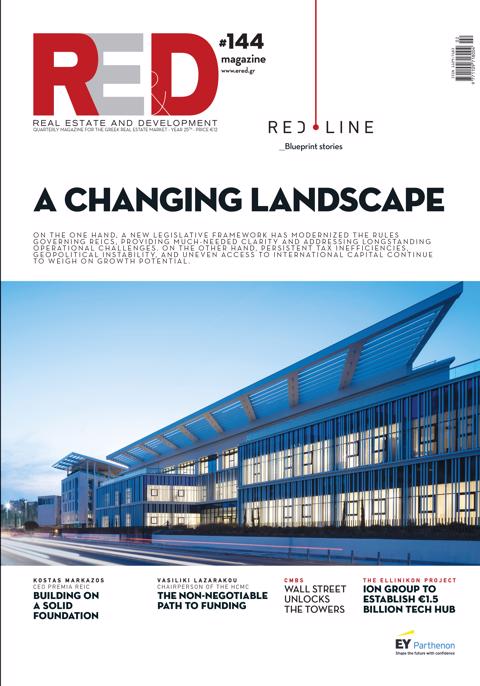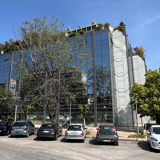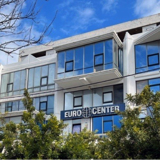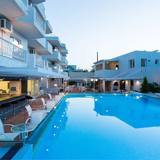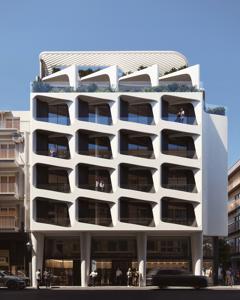According to a new report from the Economic Analysis Directorate of the National Bank of Greece, the sector’s performance maintains an upward trajectory, with airline arrivals increasing by 10% in the first four months of the year and scheduled airline seats for the period May - October rising by 4%.
Optimism is also supported by hotel expectation indicators, which are trending upwards. Specifically, the future activity index exceeds that of the Mediterranean competition (January-April: 45 versus 7 points above the long-term average). Employment figures are also positive, with the first quarter of the year closing with 27,000 net hires.
As the data shows, small and medium-sized hotel enterprises (SMEs) expect a 5% increase in arrivals in 2025 (compared to a 10% increase in 2024).
As noted in the National Bank report, these expectations are accompanied by uncertainty, as international geopolitical and economic developments affect the willingness to spend on travel (for example, the consumer confidence index in key source markets of Europe (France, Germany, United Kingdom, Italy, Spain, and the Netherlands) is five points below the long-term average). With Greek tourism continuing its upward performance in terms of arrivals (+63% over the period 2013-2024), the focus is now shifting from records to a development model.
The importance of distant source markets
Particular emphasis is placed on the medium-term outward-looking strategy, with Greece investing in so-called “long haul” markets such as the USA and China. A coordinated strategy to attract tourists from distant markets is expected to enable Greece to increase tourist arrivals and transition to a new tourism model, characterized by less seasonality and higher spending per arrival (leveraging the quality features of distant markets). Recent winter performance (i) maintained the trend of reducing arrival seasonality (+9% annually, compared to +6% annually in summer 2024), (ii) increased Greece’s share in the Mediterranean market (2.5%, up from 2.4% in winter 2024), while also (iii) confirming the upward trend in source markets. Specifically, higher growth was noted in tourist arrivals from the USA (+33%) — a traditional long-haul market for Greek tourism — which contributed one-fifth of the increase. It stands out compared to other “traditional” European markets of Greece due to:
A better seasonality profile, since half of these tourists arrive outside summer (compared to one-third for other countries)
Twice the spending per arrival compared to other markets, which increased by 19% in winter 2025 (annual real terms), largely offsetting a 5% decline in major European markets (France, Germany, and the UK).
A catalyst for this outlook is the strengthening of air connections (direct and indirect) with distant markets such as the USA (reaching about 100 flights per week in summer 2025, nearly double the pre-pandemic levels) and China (about 12 flights per week in summer 2025, nearly triple pre-pandemic levels). It is noted that the addition of new origin points from China not only allows surpassing 2019 performance but also positions Greek tourism advantageously to leverage the strong momentum of this market over the next decade (almost half of the new wave of tourists to Europe is expected to come from Asia).
Resilient “mature” tourist destinations
With new tourism demand trends already visible from emerging markets, the report examines how individual tourist destinations respond to current challenges. It notes that from a recent survey conducted by the National Bank for the third consecutive year, involving 200 SMEs in the hotel sector, a largely two-speed picture emerges, with the more “mature” tourist destinations showing higher activity.
Focusing on the broader financial picture, the “mature” tourist destinations (Aegean and Halkidiki) show signs of greater resilience. Specifically, while they recognize the high pressure exerted by the international situation on the sector (79% versus 91% sector-wide), they are more optimistic about the future, excelling in indicators such as future demand (64 points versus 38 points) and future growth (70% of the sector targeting growth, versus 49%).
The superiority of hotel SMEs in the “mature” tourist regions is linked to investment strategy choices over the past three years and an emphasis on business growth. More specifically, these SMEs stood out for more intense investment activity (70% versus 58% of the sector), spending a higher percentage of their sales (21% versus 16%). Moreover, they showed a stronger focus on enhancing their resilience, with 31% aiming to increase size and 15% to develop partnerships with other sector businesses (clusters), compared to just 11% and 4% respectively for other SMEs in the sector.
Indeed, hotel SMEs in the “mature” tourist regions stand out for their investment skill, as despite being more active investors in the previous period, they more strongly recognize the need for additional future investments. Specifically, 34% of SMEs in the sector acknowledge that the level of investments made was lower than required (versus 10% in other regions), with implementation delays emerging as a key reason for lagging (22% of the sector).
Investment activity in the “mature” tourist regions is not limited to business growth but also prepares them to respond to new conditions in the sector shaped by changes in customer preferences. More specifically, Greek hotel SMEs recognize increased customer interest in digital services (72%), local activities (61%) and products (59%), and the environmental footprint of accommodations (49%). However, hotel SMEs in the “mature” tourist areas have been more active over the last two years in addressing these preferences.
Alignment with new tourism trends is essential
Investment activity in the “mature” tourist regions is not limited to business growth but also prepares them to respond to new conditions in the sector shaped by changes in customer preferences. More specifically, Greek hotel SMEs recognize increased customer interest in digital services (72%), local activities (61%) and products (59%), and the environmental footprint of accommodations (49%). However, hotel SMEs in the “mature” tourist areas have been more active over the last two years in addressing these preferences.
In particular, 59% of SMEs in the sector implemented digital marketing actions, compared to only 36% in other regions. A similar pattern is seen in collaboration with local businesses (49% of the sector versus 28% in other areas), resulting in better capabilities to provide a comprehensive tourism experience enriched with distinctive local elements (nature, gastronomy, culture). There is also a higher level of response to customers’ environmental concerns, with 54% having implemented energy upgrade actions, compared to just 25% in other regions. As global tourism transforms due to changing tourist preferences and the emergence of new markets, the difference in investment intensity between regions tends to widen the gap between “mature” and other tourist destinations. The profile of the modern tourist is changing, emphasizing authentic experiences and sustainable practices. Businesses that manage to integrate these preferences appear poised to play a leading role in the country’s new tourism development model.

